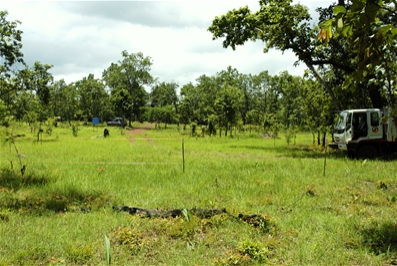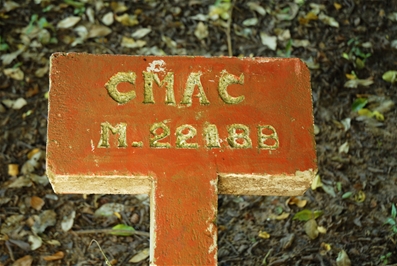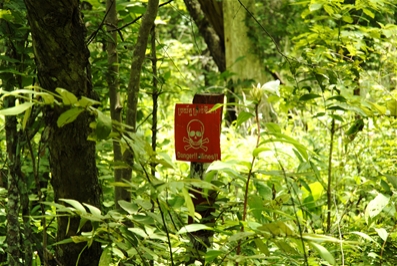
Before we even arrived in Cambodia, I knew the country had a troubled past and one of the results of the conflicts is a landscape littered with land mines. You occasionally read about the Cambodian land mine problem in a magazine or hear about it when a famous celebrity mentions something about it at a PR event. I realized that the situation was bad, but until you see it first hand, you really can’t comprehend the magnitude of the problem.
The other day, we drove out to the more remote temples of Koh Ker and Beng Mealea about 100km from Siem Reap with our excellent guide Poleak. These temples are located in an area of Cambodia that had a heavy Khmer Rouge presence, and until recently, the temple sites were fairly dangerous to access due to the presence of land mines. Today, the road side and small areas around the temple structures have been cleared of mines thanks to the work of organizations such as the Cambodian Mine Action Centre (CMAC) and the Halo Trust. However, there are still countless active mine fields in the area. Just outside the crumbling walls of many of the temple sites in the area are eery red signs warning of the potential for serious trouble if you continue on.
You might ask yourself, why don’t they just clean up the mines? Unfortunately, the problem is much more complex. The fleeing Khmer Rouge soldiers did not leave maps of where they placed mines and even with all of the advancements in technology, once a land mine is detected, it must be uncovered and removed by hand in a process that can take days. Take into account that it might take one person a day or two to clear a single mine and couple that with the fact that there are thousands if not hundreds of thousands of mines still scattered about and you get the picture.
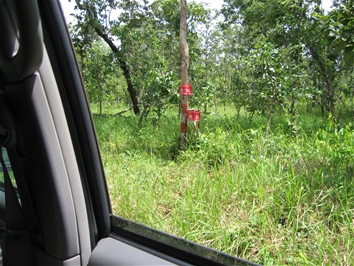
We were actually fortunate enough to see some mine clearing work in action. We pulled up to a temple complex near Koh Ker and just on the other side of the road, not more than 100 meters from where we parked the car, CMAC Mobile Unit #4 was in the process of clearing an active minefield. (Can you spot Little Pepe in the picture below?) The unit is made up of local Cambodians and the guys were on a lunch break. While asking the crew if it was safe to come over to check out what they were doing, Poleak gave us a bit of a scare when he started to walk through an area that had not yet been cleared. Even when you are walking in the tire tracks of the CMAC truck or standing in an area recently cleared by the team, it is still pretty unnerving to realize that there are active landmines on the other side of the red tape from which you are standing.
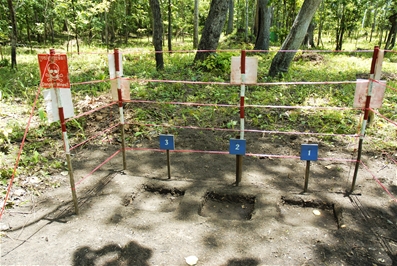
At Beng Mealea, we really saw how bad the landmine problem was in that particular area. While exploring the outskirts of the temple, the red signs indicating the presence of a minefield were still present and we came across one that had a number etched into it – (CMAC M. 22188). We thought it was just a survey marker, but Poleak informed us that this was the number of mines cleared from the area. We were even more shocked to learn that these mines were cleared from an area only about one square kilometer in size! That’s right, over 22,000 land mines in a square kilometer… pretty screwed up. Fortunately for the tourists, a lot of the de-mining work has been around the popular temple sites, but sadly for the local villagers, the mines still exist in large numbers on their land and on a daily basis, you see the impact it has had on those who were unfortunate enough to discover a mine while trying to plant rice or graze their cattle.
